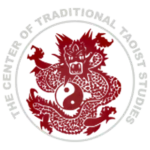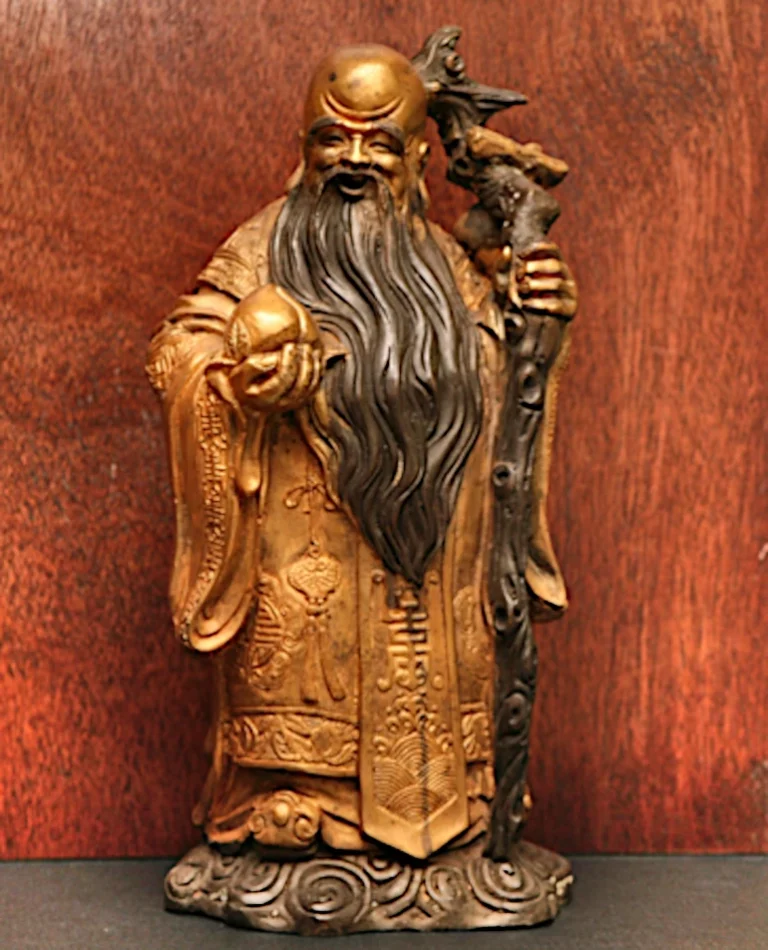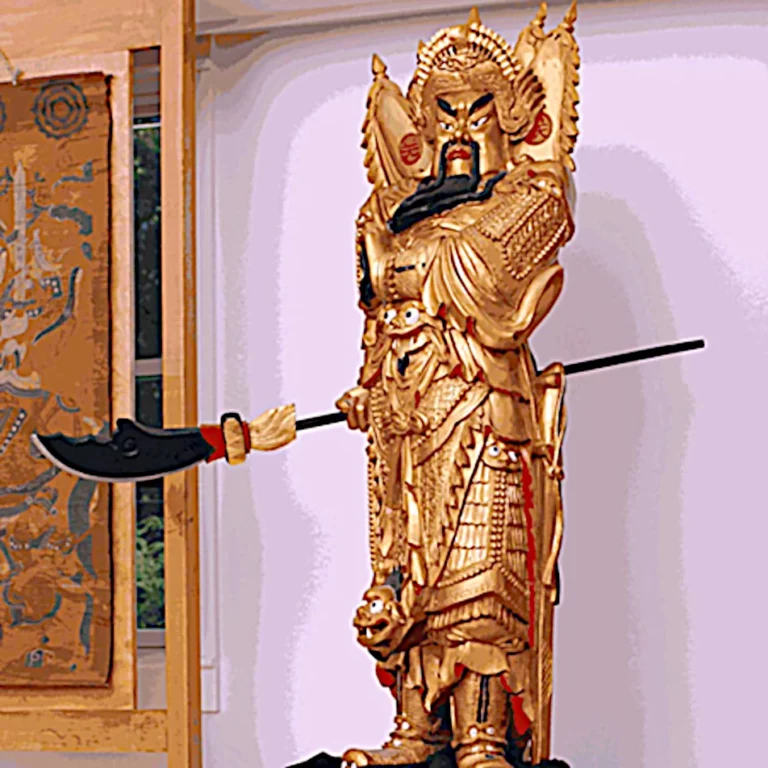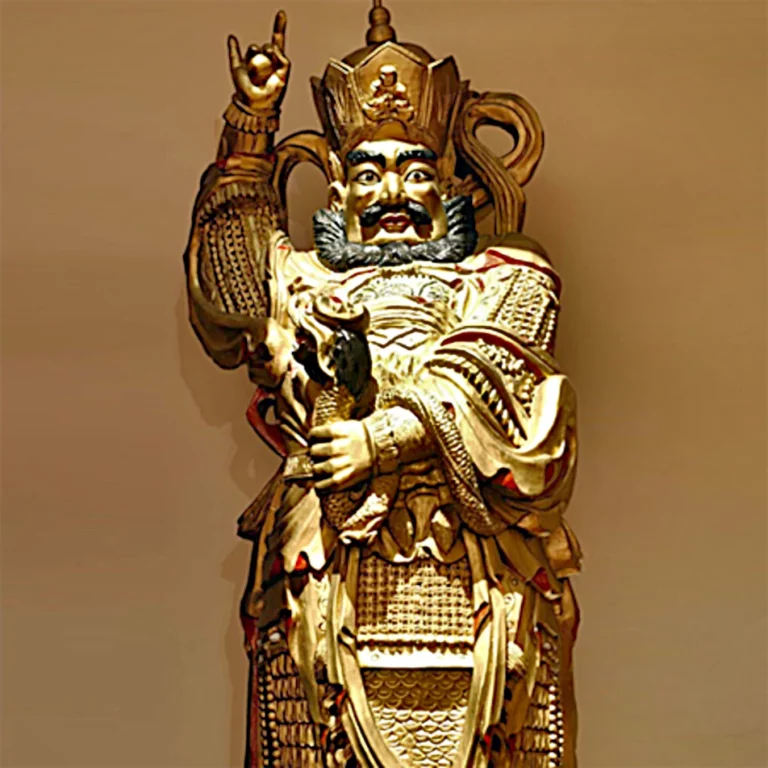Pantheon of Taoist Gods
Therefore all things of the universe worship Tao and exalt Teh.
— Lao Tzu
The images of Taoist deities are crafted according to very specific conventions. Using the God of Health as an example, he is always depicted with a domed head, holding a dragon staff in one hand and a peach in the other.
Traditional Taoist theory holds that the spirits represented via the temple’s images are celestial beings that have achieved their position in one of three ways. Consistent with Taoism’s martial theme, the first category of spirits is that of mortal heroes who died a violent death. Similar to Christian “saints,” these spirits protect those Taoists who sincerely communicate with the heavens and try to live spiritual lives. In this sense, Taoists earn the right to be “chosen people” favored by the heavens, unlike other faiths whereby such status is a birthright or simply self-selection.
The second category of Taoist spirits — which includes the God of War — is composed of those celestial creatures who were careless or cocky in their prior mortal state, but learned from their mistakes. The exalted position of these beings reinforces the important Taoist lesson that one should always endeavor to take correct action and not make careless errors; this is important because the Taoist willingness to take action must be tempered by careful, deliberate consideration. Despite such warnings, imperfect Taoists still have the courage to try to do what is necessary — and bear the consequences of their mistakes. In short, while mistakes are inevitable, the true sin is not the mistake itself, but rather not learning from that error. Indeed, the ability to learn from mistakes is indicative of a Taoist’s skill in adjusting to reality as a continuously adaptive entity.
The final category of Taoist spirits is comprised of those celestial creatures born directly into the celestial world, including, for example the Three Pure Ones — Sanqing (三清), the Jade Emperor, the God of the Magical Power. Since these occupants of the non-physical world were never burdened with a physical body, they are ideal prayer mediums, linking earthly mortals to the Heavens.
There are literally hundreds of Taoist spirits, organized according to a strict hierarchical system with their consecrated images appropriately arranged throughout the temple. While each master has some limited freedom to accentuate certain deities, there remains a specific layout that is consistent across all classical temples; one adhered to by the Center’s Temple of Original Simplicity.
It is the duty of the Temple of Original Simplicity’s master, Grand Master Anatole, to invite appropriate spirits to inhabit these images using ancient “eye opening” ceremonies — the Taoist equivalent of consecration. Once activated, they serve as the communication portals by which the congregation can pray for celestial guidance. In a sense they become personal oracles to devout Taoists.




